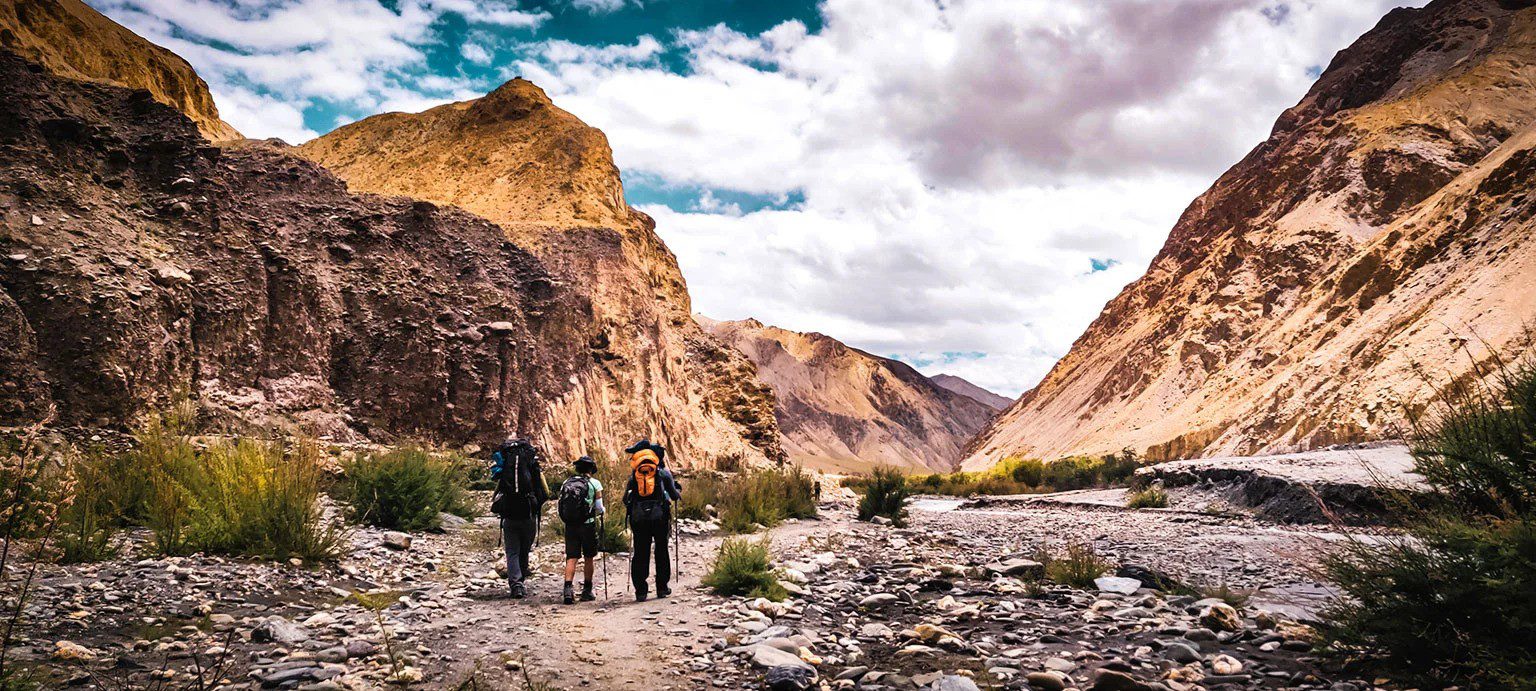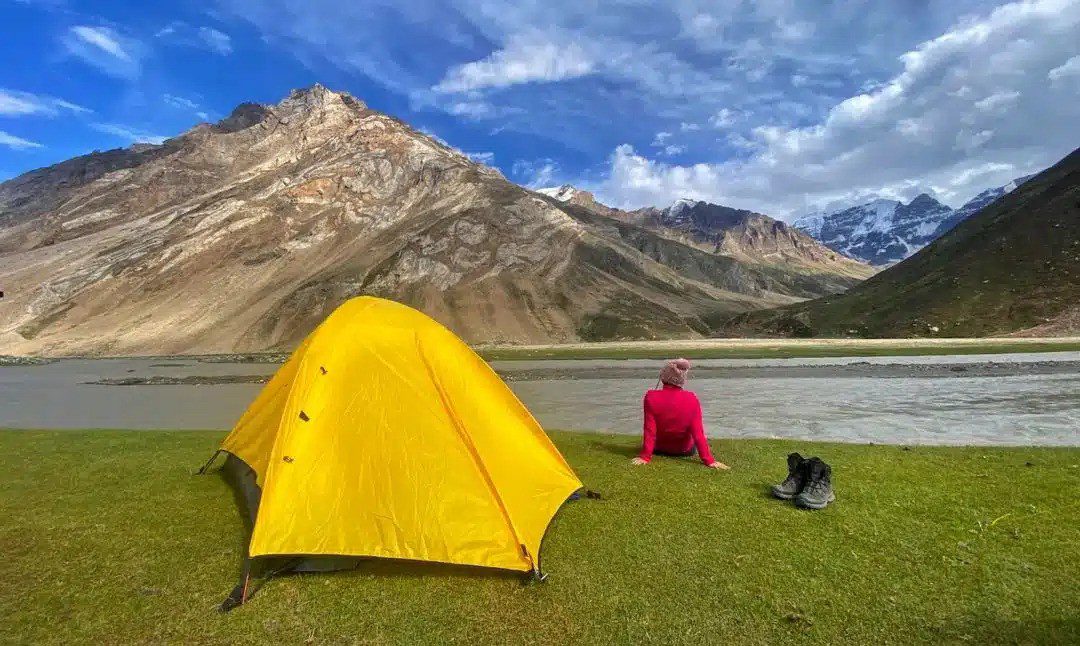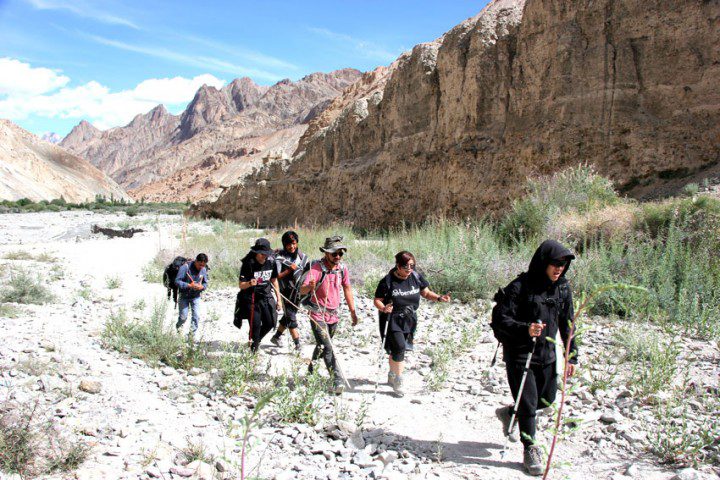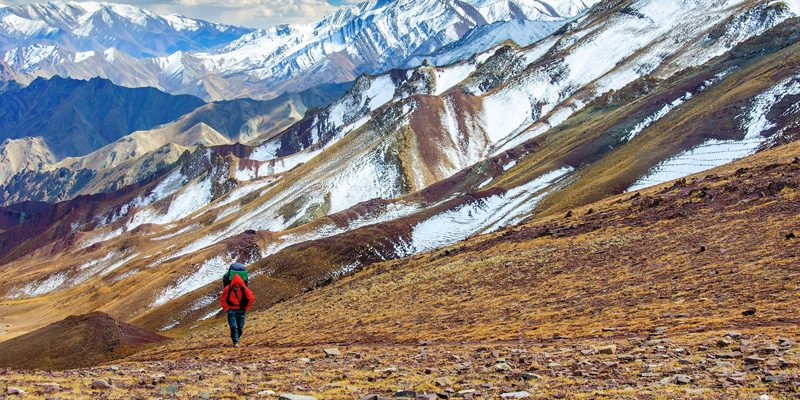Ladakh, the land of high passes, is known for its breathtaking landscapes, spiritual monasteries, and unique culture. But beyond the well-trodden paths lies a hidden world of untouched valleys and silent trails waiting for those who crave solitude and peace. This is the journey of silence—a meditative trek through Ladakh’s quietest valleys. For adventurers seeking a transformative experience in nature’s raw beauty, these valleys offer an unspoken serenity unmatched by other destinations.
Introduction: Embracing Silence in Ladakh’s Remote Valleys
Ladakh’s quietest valleys are perfect for trekkers and explorers who want to escape the noise of popular trails. These remote areas provide more than just stunning views; they offer a rare opportunity for introspection and connection with nature. If you’re seeking a spiritual escape or a mindful experience, trekking in these untouched valleys promises both.
“I came to Ladakh expecting scenic beauty, but what I found in the silent valleys changed me. It was like stepping into a world that hadn’t been touched for centuries.”
– Sarah Williamson, Photographer, USA
Why Choose Ladakh’s Quietest Valleys for Trekking?
The serene, less-traveled trails of Ladakh offer a distinct experience. Here’s why choosing these hidden valleys might be the most rewarding adventure:

- Unique Peace: In Ladakh’s quiet valleys, the stillness amplifies every sound and sight. You’ll notice details in nature often missed elsewhere, like the rustling of leaves, a rare birdcall, or the gentle flow of a distant river.
- Connection with Nature: These trails provide an ideal setting for mindfulness. Without the crowds, trekkers can immerse themselves in the beauty of Ladakh’s mountains and valleys.
- Cultural and Spiritual Discovery: Many valleys hold ancient monasteries and isolated villages. A journey here connects you not just with nature, but with Ladakh’s rich history and spiritual traditions.
Unique Features of Ladakh’s Hidden Valleys
Ladakh’s hidden valleys are known for their diverse landscapes and spiritual sites:
- Stunning Landscapes: Snow-capped peaks, green meadows, and quiet riverbanks make these valleys feel like hidden paradises.
- Ancient Monasteries: Some valleys have centuries-old monasteries where monks live a life of solitude and spirituality.
- Wildlife and Flora: Rare Himalayan wildlife and endemic plants thrive in these untouched areas, adding to the sense of isolation.
“Being surrounded by nature in such a quiet environment was profound. Every day felt like a meditation session in motion.”
– Liam Roberts, Teacher, United Kingdom
Benefits of Trekking in Silent, Undiscovered Valleys
Trekking in Ladakh’s remote valleys isn’t just about adventure; it’s about mental rejuvenation. Here are some benefits of trekking through these peaceful landscapes:
- Enhanced Mindfulness: Without the usual distractions, you can focus fully on the journey and the environment.
- Emotional Recharge: Silence and solitude have proven psychological benefits. Many trekkers find their stress melt away amidst the beauty and peace.
- A Spiritual Connection: Many travelers feel a strong spiritual pull when trekking these valleys, surrounded by nature and Ladakh’s ancient cultures.
Planning Your Journey of Silence: Essential Preparations
A journey through Ladakh’s quietest valleys requires planning. Here are essential tips for a safe and fulfilling adventure:

Best Time to Trek in Ladakh’s Quiet Valleys
Ladakh’s trekking season generally spans from June to September. Each season brings different weather conditions and landscapes:
- June-July: Warm and vibrant, with blooming wildflowers.
- August-September: Cooler, quieter, and a great time to see the transition into fall.
Choosing the right time can enhance your experience and align your journey with the ideal weather conditions.
Packing Essentials for a Remote Trek in Ladakh
Trekking in Ladakh’s remote valleys requires careful preparation. Here’s a list of must-have items:
| Item | Purpose |
|---|---|
| Layered Clothing | For temperature shifts, especially at higher altitudes |
| Waterproof Jacket | Sudden showers are common |
| Sturdy Trekking Shoes | Essential for rough terrains |
| Water Purification Tablets | For fresh but untreated water sources |
| Power Bank | Limited charging options in remote areas |
| Sunscreen & Lip Balm | High-altitude sun can be harsh |
| Reusable Utensils | Help reduce waste in these pristine areas |
Top Silent Treks in Ladakh’s Untouched Valleys
Markha Valley Trek: A Journey Through Silence and Scenic Beauty
The Markha Valley Trek is among the most peaceful trails in Ladakh. This trail weaves through dramatic landscapes, isolated villages, and vibrant monasteries.
- Distance: 65-70 km
- Duration: 6-8 days
- Highlights: Scenic landscapes, ancient monasteries, and cultural encounters.
“Markha Valley was where I truly understood what silence meant. The beauty of the landscapes combined with the quietness was magical.”
– John Mayer, Travel Blogger, Canada
Sham Valley Trek: Exploring Ladakh’s Tranquil “Apricot Valley”
Known as the “Apricot Valley,” the Sham Valley Trek is easy to moderate and perfect for beginners seeking quiet and beauty.

- Distance: 30-40 km
- Duration: 3-4 days
- Highlights: Picturesque villages, apricot orchards, and Buddhist monasteries.
“Sham Valley felt like a dream. I walked through apricot orchards and ancient villages with only the sounds of nature to keep me company.”
– Elena Martinez, Yoga Instructor, Spain
Nubra Valley Trek: Hidden Gems and Peaceful Pathways
The Nubra Valley Trek is ideal for those seeking serenity and natural beauty. It’s a tranquil experience through Ladakh’s valleys with stunning desert landscapes.

- Distance: 50-60 km
- Duration: 5-6 days
- Highlights: High mountain passes, desert landscapes, and Buddhist stupas.
“Walking through Nubra Valley, I felt as if time stood still. The peace and the landscape were unlike anything I’ve ever experienced.”
– Martin Liu, Engineer, Germany
Phuktal Monastery Trek: A Spiritual and Silent Journey
A trek to the Phuktal Monastery offers a truly silent and spiritual journey. This monastery, perched on a cliff, is one of the most secluded in Ladakh.

- Distance: 40-50 km
- Duration: 5-7 days
- Highlights: Ancient monastery, spiritual environment, stunning landscapes.
“Phuktal Monastery is where I found peace. The silence and spirituality of the place were transformative.”
– Rachel Chen, Software Developer, Australia
FAQs About Trekking Ladakh’s Quiet Valleys
What is the best time to visit Ladakh for quiet trekking?
A: The best time is June to September when the weather is stable and the valleys are accessible.
Are these treks suitable for beginners?
A: Yes, some treks like the Sham Valley Trek are beginner-friendly, while others require moderate experience.
How should I prepare for high altitudes in Ladakh?
A: Acclimate for 1-2 days before starting, stay hydrated, and pace yourself on the trail.
Can I trek these valleys solo?
A: Solo trekking is possible, but hiring a guide for remote trails is recommended for safety.
What should I pack for a silent trek in Ladakh?
A: Layered clothing, sturdy trekking shoes, and eco-friendly supplies are essential.
How can I respect local customs while trekking?
A: Dress modestly, greet locals with respect, and observe silence near monasteries.








